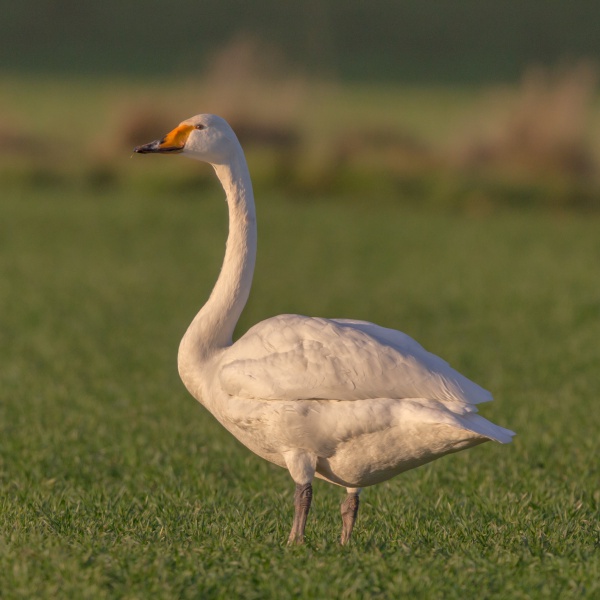Facts About Whooper swan
The whooper swan, also known as the common swan, is a large bird found in the northern hemisphere. It is the Eurasian counterpart of the North American trumpeter swan and serves as the type species for the genus Cygnus, which derives its name from the Latin word for "swan." Whooper swans are larger than Bewick's swans, measuring between 140 and 165 centimeters in length and boasting a wingspan of 205 to 275 centimeters. They rank among the heaviest birds capable of flight, with males typically weighing between 9.8 and 11.4 kilograms and females between 8.2 and 9.2 kilograms.
These swans require large bodies of water to thrive, spending much of their time swimming, foraging, and feeding on aquatic plants. They have a deep honking call and are strong fliers, migrating hundreds or even thousands of miles to their wintering grounds in southern Europe and eastern Asia. Whooper swans breed in the subarctic regions of Europe and Siberia and are occasionally found breeding in northern Scotland and Ireland. They form lifelong pairs, and their young, called cygnets, stay with them through the winter. Whooper swans prefer to breed in wetlands but will nest near any water source.
Before taking off as a group, whooper swans use various signals such as head bobs, shakes, and wing flaps to communicate. These gestures help the flock decide whether to fly and who will lead. Known for being vocal, their calls are similar to those of Bewick's swans but are more resonant and lower-pitched. In Europe, whooper swans are highly regarded; Finland has named it their national bird, and it features on the 1 euro coin. They are also protected under the Agreement on the Conservation of African-Eurasian Migratory Waterbirds (AEWA). The legendary "swan song" may have originated from the musical sounds whooper swans make at the moment of death.

 United Kingdom
United Kingdom